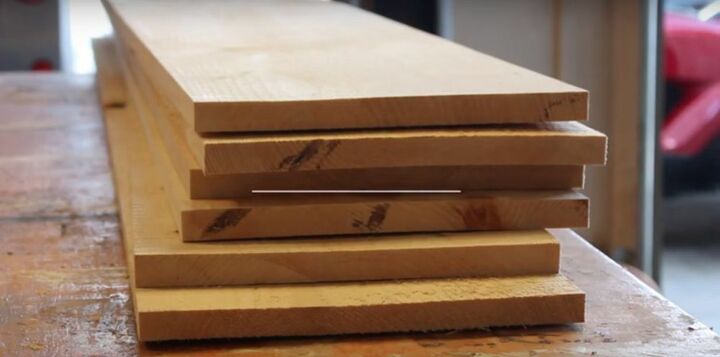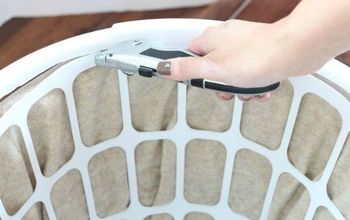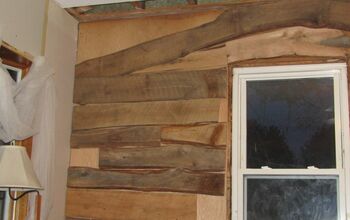How to Build DIY Shed Doors in 13 Simple Steps

Your garden shed can be a really important feature of your outdoor space. The perfect spot for storing tools and equipment and keeping your sun loungers and lawn mowers when it’s not so nice outside, it can even double as a small workspace, which means lots of us love having one.
But like any wooden structure, sheds are at the mercy of the elements and can commonly experience wear and tear over time. This means that sometimes you’ll need to repair or replace part or all of them, which can prove to be a costly business.
Shed doors are particularly liable to ending up damaged. Whether it’s broken hinges, warped wood, or even gaping holes in their exterior, you need to make sure they stay in working order, and one way to do this on a budget is by making new ones yourself.
That’s what this tutorial is going to help you do. Easy to build, economical to make, and looking amazing, I’m going to show you how to craft these gorgeous shed doors from scratch in the space of a single weekend.
Here’s how it’s done.
Tools and Materials
Before you get started on your new shed doors, there are a few essentials you’re going to need. These include:
- Good, solid pine
- A measuring tape
- A pencil
- A wood saw
- A vice
- A drill
- Clamps
- A sander
- Screws
- Glue
- Hinges
- A lock
Before you can begin making your shed doors, you’ve got a long list of materials to gather together. With regards to the equipment you’ll need, there's a lot to get hold of, which means that unless you’re really into your DIY and have everything you require already, you’ll have to make a trip to your local hardware store to either buy or hire what you need.
Once this is done, you’ll also have to source some good, solid pine to work with. Other woods could certainly be used as a substitute, but as this will be the key component in making your doors, you want something that’s robust, durable, and able to withstand outdoor use.
The next step in making your shed doors is cutting your wood down to size. Start by taking your tape measure, as demonstrated in the video, and marking where you want to cut. This will ensure greater precision and a more professional-looking finish than attempting to do this part of the process freehand.
Once you’ve marked out your measurements, it’s time to take your saw and start cutting your wood to size. If you’re prone to coughing or sneezing, you might want to wear a mask for this part to keep the dust from getting up your nose and into your mouth, as well as safety goggles if you’ve got sensitive eyes.
With your wood cut to size, take a vice and clamp each individual piece so that it’s firmly held in place, before using your drill to add score marks at intervals along the boards.
When you’re done, add glue along the edges of three planks, as shown in the video, before pressing these together to make a single solid structure.
Using metal clamps, make sure these are held firmly together while you drill nails into the score marks, to ensure the individual pieces of wood are properly joined.
Repeat the process a second time to get your second door.
Now the first part of your shed doors is complete, it’s time to cut some more wood. As seen in the video, you’ll be cutting smaller pieces this time, so an additional degree of precision is required. Because of this, I’d advise having some extra wood to spare, in case you mess up along the way and need a second attempt at getting it right!
Rinse and repeat once complete.
Next up, you’re going to need to make some pocket holes, so go and retrieve your trusty drill. I advise you to mark out the places you want to drill in pencil first, for that extra degree of precision.
Before drilling, think about whether you need a vice to hold each individual piece in place, as the last thing you want is for your wood to slip around as you’re trying to make your pocket holes.
Next up, it’s time to glue the various components together and secure them in place with screws, as seen in the video, which should give you an idea of the shape and style you should be aiming for.
Remember that every step needs to be repeated twice!
Spot any rough edges or raggedy bits of wood? Then you know how to fix it. Using your sander, smooth these out to create a cleaner and more professional-looking finish.
Next up, it’s time to drill some more pocket holes. The process is essentially the same as the one outlined in step five: mark out where you want to drill, clamp the wood in place, and go.
All finished? Then take your individual pieces of wood and assemble them on the table. Using screws, secure these in place, before adding a coating of glue.
Taking the part of the door you already assembled, position this on top and press down firmly, before drilling in some additional screws to make sure your structure is nice and solid.
This is a pretty good guide on how to build a shed door, but that doesn’t mean you can’t deviate from my instructions at various points along the way. It’s entirely up to you if you want to add a few fancy flourishes, so feel free to incorporate your own designer décor at this point.
This could be anything from stylistic differences through to fancy calligraphy or signs drilled into the woodwork – as long as you like how it looks, absolutely anything goes.
In the not-too-distant future, your woodwork is going to start resembling a bona fide shed door, and to do that, it needs some hardware attaching. I went for pretty standard black hinges, but that doesn’t mean you have to.
Instead, I’d recommend spending some time in your local hardware store, so you can have a proper look at the various options that are available. With so many different styles, colors, and metals to choose from, try to pick something that seems sturdy and durable but still has a degree of aesthetic appeal.
This is one of the ways you can really elevate the style of your shed, from simple and functional to smart and fancy or anything in between.
Your doors should now look like doors, but they’re not much good to you on their own. This means, of course, that it’s time to carry them out to your garden, and depending on how heavy they are, this next part might be a two-person job.
Taking your drill and a few screws along with you, position them securely in place. Having a helper is definitely handy at this point, as they can hold the shed doors in position as you drill.
Make sure the doors feel solid and that you’re happy with how they hang before you move onto the next step.
Last but not least, it’s time to make sure your shed can be secured, so it can act as a useful repository for your various garden paraphernalia, from wheelbarrows to wellington boots.
To do this, you’ll need to add a lock, and it’s important to the overall look to make sure that it complements your hinges and other hardware in terms of the color and type of metal used.
You can see that I went for an internal floor lock and an external bolt, both in black, to make sure my shed was doubly secure and also to give me the flexibility of being able to open either one or both doors at a time.
Voilà! That’s it. The finished look is one I love: clean, simple, and functional, but with enough fancy flourishes to make it appear professional.
If you’re looking to replace your own shed doors, I really would recommend giving this a try, as it’s cheaper than buying new ones and gives you a fun project to work on when you have a spare weekend.
If you do give it a go, please feel free to share some pictures in the comments, as I’d love to see how your attempts turn out!
Enjoyed the project?
Resources for this project:
See all materialsComments
Join the conversation
-
 Andrew DeLivron
on Jul 29, 2020
Andrew DeLivron
on Jul 29, 2020
Can I do a single door for a 36" to 38" wide opening? Your doors appear to be about 30" each.
-
-
















































Frequently asked questions
Have a question about this project?
What tools to use if you don’t have these professional ones that you have?